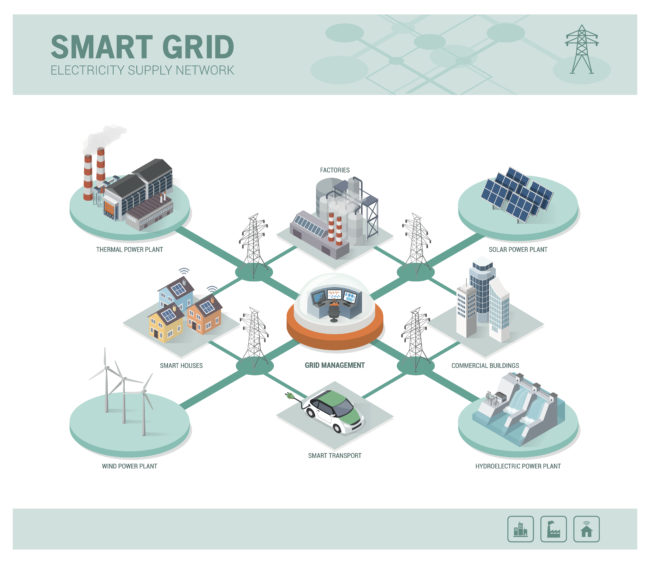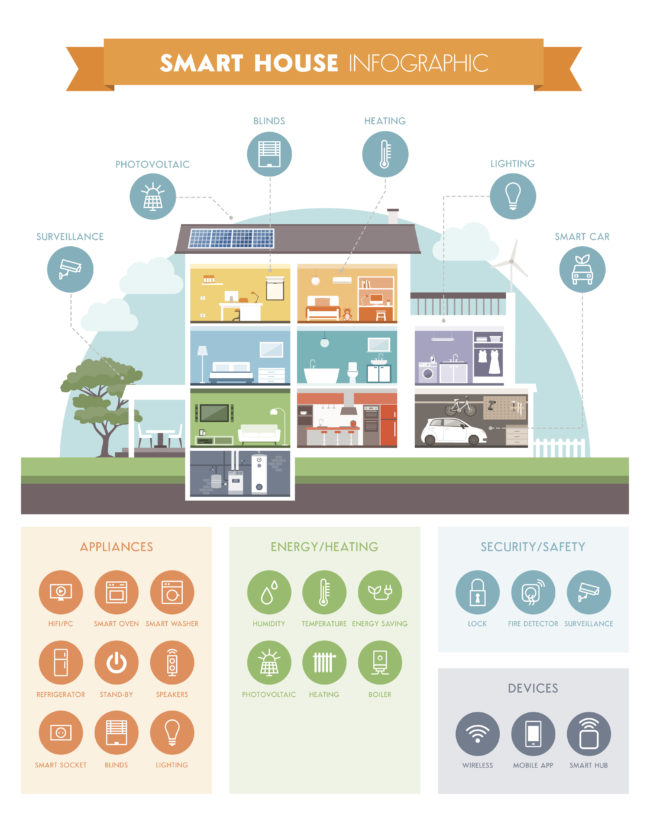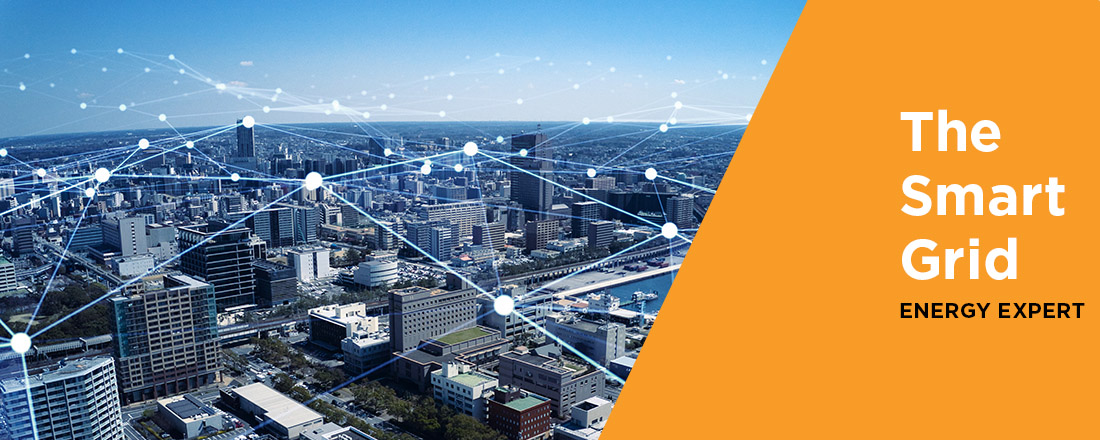MCE’s Energy Expert series takes a deeper dive into more complex energy topics. Explore topics like this, microgrids, and net energy metering in greater detail through our Energy Expert series. Looking for more basics? Check out our Energy 101 series.
What is the grid?
The electricity grid is a centralized system of generation and power lines that allows electricity from distant generation facilities to reach customers. The grid is a combination of generation sources, like solar, wind, biomass, and natural gas, and the transmission and distribution lines that carry the power to your home or business. When the energy reaches you, it flows through a meter that keeps track of how much electricity is being used at your property. The meter not only helps your power provider keep track of how much to charge you, but it also helps them generate the right amount of energy to meet your needs. To learn more about the electric grid and how it works, read Energy 101: Energy Basics.
What is a smart grid?
A smart grid transforms our electrical grid into a digital system that can be more easily monitored and controlled. Installation of new technology allows for more efficient transmission of electricity, quicker restoration of power after outages, reduced costs for customers, and better integration of customer-owned power generation, including rooftop solar.
How does a smart grid work?
A smart grid works by connecting power plants, transmission lines, and distributed energy resources through technology that enables these pieces to interact. For example, during an outage, power would be diverted away from homes and nonessential businesses by disabling specific transmission and distribution lines. This process would allow power to be restored faster to essential facilities like hospitals or emergency services.
Smart grids can also help power remain on during an outage. In a community where rooftop solar is available, transmission lines from power plants could be turned off, but local distribution lines could remain on. This process would allow rooftop solar energy from the surrounding area to continue offering power for the community and help keep critical facilities operating. Depending on the size of the local solar resources, an entire neighbor could function while the main power grid is offline.
By installing new control technologies and distributed energy generation, a smart grid creates energy resiliency and security in neighborhoods. Pairing a smart grid with electrification and energy efficiency measures also reduces greenhouse gas emissions and help us reach a carbon-free future faster.
How do smart meters work?
One of the most important components of a smart grid is the smart meter. Smart meters connect homes and businesses to the overall grid, providing the utility with data on energy generation and consumption for each customer. This information helps the utility accurately determine how much energy it needs to purchase on behalf of their customers. Smart meters can also help customers reduce energy consumption and more efficiently manage their behavior patterns when paired with energy management systems (EMS).
EMS help all aspects of a smart home or business work in partnership with the smart grid. The smart grid can send signals to your smart meter, which can trigger changes in your EMS. For example, if a flex alert is called, your EMS can receive a notification to reduce electricity consumption as much as possible during that alert period, such as automatically adjusting the temperature on your thermostat or stopping your vehicle from charging at a certain time. While you may already practice energy conservation during a flex alert, a smart home can take action automatically based on signals from the grid.


How does a smart grid increase access to renewable energy?
Transition to a smart grid also increases access and adoption of renewable energy. As rooftop solar has become more common, California has accumulated an excess of solar energy during the day. Pairing distributed solar generation with battery storage and integrating it with smart technology make it possible for utilities and customers to better utilize this clean generation source. A benefit for you is that your costs are reduced because utilities can more accurately budget how much energy they need to purchase and place on the grid.
Implementation of a smart grid also means development of an electric superhighway that more easily distributes energy from a generation source. These superhighways can connect generation sources in remote locations to the dense urban areas where power is needed most. By integrating these generation sources, utilities experience less concern about the intermittency of renewable resources. For example, if Southern California has no wind but Northern California has plenty, the superhighways can get the electricity where it’s needed, when it’s needed.
How is MCE connecting our customers?
Energy storage is one of the many ways MCE is connecting our customers. In June 2020, MCE launched a new $6 million Energy Storage Program to deploy 15 megawatt-hours of dispatchable, customer-sited storage solutions for backup power and resiliency, which will be owned by the customer. MCE will leverage these battery resources to also provide valuable grid services in support of its mission to reduce greenhouse gas emissions, maintain low costs, and help customers reduce their energy costs.
One of MCE’s key principals is to help vulnerable customers gain access to cleaner and more resilient energy options. The Energy Storage Program is designed to help these priority customers remain safe during Public Safety Power Shutoff and other grid outages. MCE aims to remove barriers to participation by offering gap funding and other significant financial support that reduce or eliminate upfront and out-of-pocket costs. MCE is also offering simple and affordable repayment options to repay any balance remaining for nonpriority customers.
In addition to the Energy Storage Program, in summer 2020, MCE also purchased and distributed 100 portable lithium batteries to customers with a life-sustaining medical need for power, at no cost to them. This program was a partnership with the regional Centers for Independent Living.
For more information.
By working with our customers, MCE can achieve a carbon-free future while creating more resilient communities. For more information about our programs, visit our programs webpage and don’t forget to check out the latest in our Energy Expert series.






